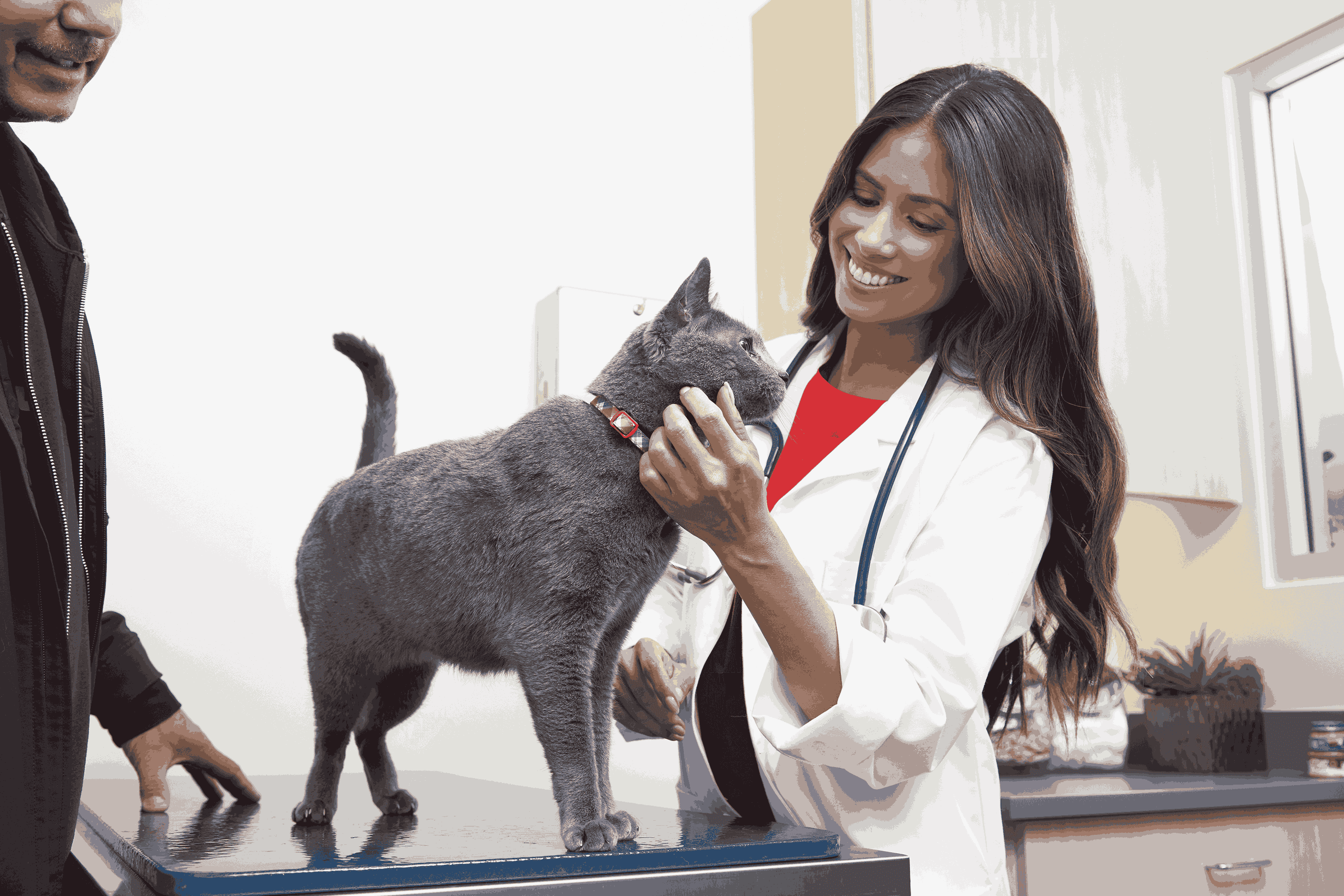Eyeworms in Cats
Thelaziasis

SUMMARY OF CONTENT
SEVERITY:
-
 Resolves within weeks with proper treatment
Resolves within weeks with proper treatment -
 Treatable by a veterinarian, by the pet parent
Treatable by a veterinarian, by the pet parent -
 Keep pets indoors and control the fly population
Keep pets indoors and control the fly population -
 Transmission is not possible between animals or between animals and people
Transmission is not possible between animals or between animals and people -
 Diagnosis requires an examination of the eye
Diagnosis requires an examination of the eye
VERY COMMON IN
Symptoms & Signs
Generally, animals show few signs of the infestation. Due to irritation of the eye, animals may produce more tears, may be sensitive to light, and occasionally develop conjunctivitis (inflammation of the mucous membranes of the eyelids). This can become more serious if a secondary bacterial infection develops.
Diagnosis
Eyeworms are diagnosed by examination of the cat’s eyes. The eyeworms can usually be seen, however it might be necessary to place the cat under anesthesia to thoroughly examine the eyes.
Causation
The eyeworm can infect dogs, cats, sheep, deer, and other mammals and cause a disease known as thelaziasis. Eyeworms live in the tear ducts, between the eye and the lids. The adult female worm lays her eggs in the tears. There they develop into larvae that are ingested by certain flies, such as the face fly. The larvae develop in the fly for about 30 days and then move to the mouth of the fly. When the fly feeds near the eye, the larvae move out of the fly’s mouth and migrate to the eye of the new host. In three to six weeks, the larvae develop into adults and repeat the cycle.
Treatments
AT-HOME CARE
SUPPORTIVE CARE
MEDICATIONS
DEVICES
SURGERY
SPECIALISTS
Cost Of Treatment
Uncomplicated cases of Thelaziasis can be diagnosed and treated for less than $500.
Recovery
Most cats respond well to treatment and make a full recovery within a few weeks. If left untreated, there is a risk of permanent blindness.
Monitoring
Cats should be monitored closely during recovery for resolution of clinical signs. A follow-up eye examination may be necessary to ensure the condition has completely resolved.
Prevention
Keeping pets indoors and controlling the fly population is a helpful method in reducing the spread of eyeworms. Keeping the environment clean and free of garbage and fecal material will also help decrease the population of flies. If avoidance is not possible, the use of a fly repellent is recommended, especially in areas with a high fly population.
Disclaimer
The information contained on this page is for educational purposes only. Treatment should only be provided under the advice of a veterinarian who has examined your pet under the laws applicable to your state of residence.
Questions about Eyeworms

Two Easy Ways to Start Earning Rewards!
Become a member today!Members-only pricing and offers, personalized care notifications, Vital Care points back on every purchase and more!Become a credit card member today!
Earn 2X Pals Rewards points at Petco
when you use Petco Pay!APPLY NOWLearn More About Petco Pay Benefits






